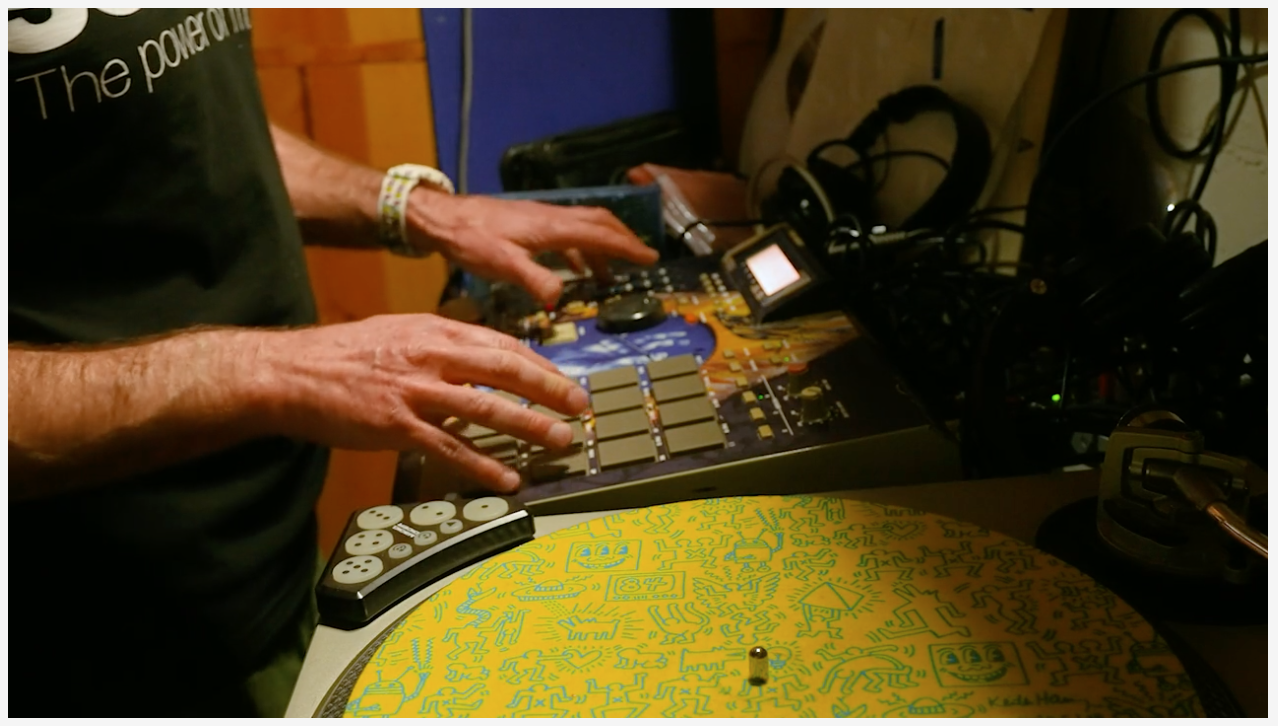+ This video is presented courtesy of RJD2’s brand new course on Soundfly, RJD2: From Samples to Songs. Sign up and learn to create and arrange original, instrumental hip-hop music from a true sampling pioneer!
What is sampling?
Sampling is the act of taking a piece of audio or sound and using it in a new composition. In its modern form, that mostly takes the form of putting snippets of audio into devices, like the Akai MPC or a digital audio workstation (DAW) like Ableton Live or Logic Pro, and then manipulating them in some way to give them a new context.
As RJ points out in the video above and throughout his course, in their simplest form, modern samplers allow you to adjust the length of your sample, how much of it you use, and the timing, which can change the pitch. Samplers can also do many other things, like edit audio, reverse it, add expression or velocity values to it, filter it, manipulate it, and arrange it — but it’s amazing how much you can do just with those two initial parameters.
How did it develop?
Sampling has been around since the beginning of recorded music, and arguably even before then. Classical composers often did something similar by borrowing an exact copy of a part from a previous composer, something now called interpolation.
Wolfgang Amadeus Mozart’s “Symphony No. 37 in G major” contains an exact copy of Michael Haydn’s previous “Symphony No. 25 in G major” but in a different context. You can hear Haydn’s piece here starting right away, and listen to the main theme from Mozart’s piece below starting at 1:24:
Jazz musicians similarly made “quoting” other musicians a core part of their performance, playing others’ licks or motifs during solos, as homage or even a type of inside joke.
As RJ mentions, sampling with recorded audio began with recording audio onto tape and then cutting and splicing it together to manipulate it. In particular, there was a movement in the 1940s pioneered by a French artist named Pierre Schaeffer called Musique Concrète that treated recorded sound as the raw material for new compositions.
Recorded audio all of a sudden became the fodder for new works.

This idea of chunks of recorded sound as raw materials that you can rearrange or manipulate to create a new thing is core to what sampling in hip-hop is all about — and what drove RJ to it. The Musique Concrète people used it to make avant-garde art music pieces. Hip-hop artists made it something you can dance to.
Sampling continued to develop through the second half of the 20th century with the Mellotron, a tape-based sampling keyboard you might recognize from The Beatles’ “Strawberry Fields Forever,” and the Fairlight CMI, an early digital sampling synth promoted heavily by Peter Gabriel, among others.
Hip-hop pioneers took it to the next level.

Initially, sampling took the form of finding a specific spot on a record called the “break” that was only drums and percussion and looping it. In the 1980s digital sampling machines like the E-mu Emulator and AKAI S950 allowed producers to go even further by chopping up bits of audio and rearranging them.
The machine that RJ uses is an AKAI MPC, which is another digital sampler and which we get into in much more detail in RJD2’s From Samples to Songs course.

*Note: If you want to go deeper on the history of hip-hop and its culture of sampling and production, check out our course The Art of Hip-Hop Production.
How does sampling impact creativity?
RJ started sampling to better understand the hip-hop music he was spinning as a DJ — but when he started making music with samples, it changed how he thought about music from a core, fundamental place.
Working with a sampler often creates constraints that can inspire creativity. It allows you to think of music in ways other than simply notes on a keyboard or pitches in a scale. It pushes you to think of music in shapes and blocks.
We often think of sampling simply in terms of borrowing awesome parts from artists we love. But there’s also the creative element, no matter what source material you’re using. When you drastically limit your “notes” and “instruments” to sampled material, it opens up all-new creative avenues.
We’ll be exploring these concepts and how sampling has impacted the way RJ makes his music throughout the course, even when he’s using instruments instead of samples.
Ready to Learn From RJD2 Himself?
Learn from instrumental hip-hop producer and sampling pioneer RJD2 himself how to write and arrange music drawing on the power of sampling records and a collage-based mindset. He’ll show you how he personally tackles new tracks with his trusty MPC, and he’ll open up sessions from some of his classic tracks to show how they were made. You’ll learn new approaches to sampling, songwriting, and arranging, and how to make instrumental beats that capture someone’s attention from start to finish.
Join RJD2: From Samples to Songs today.